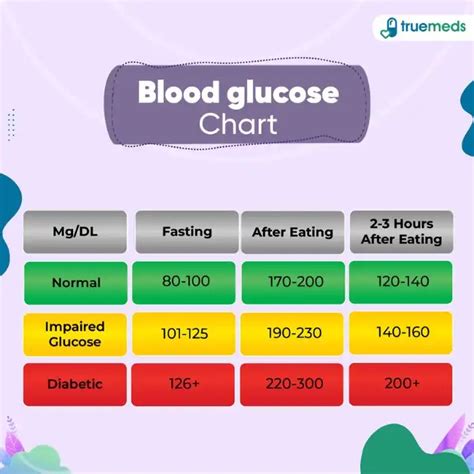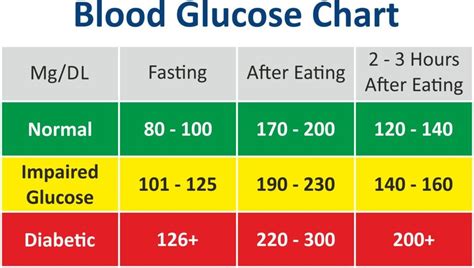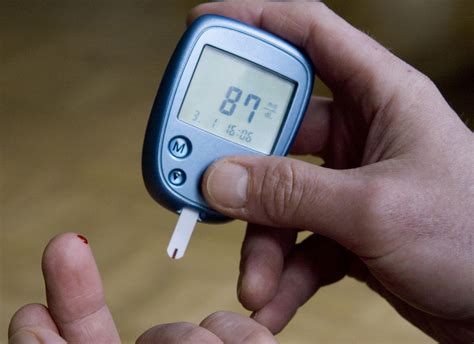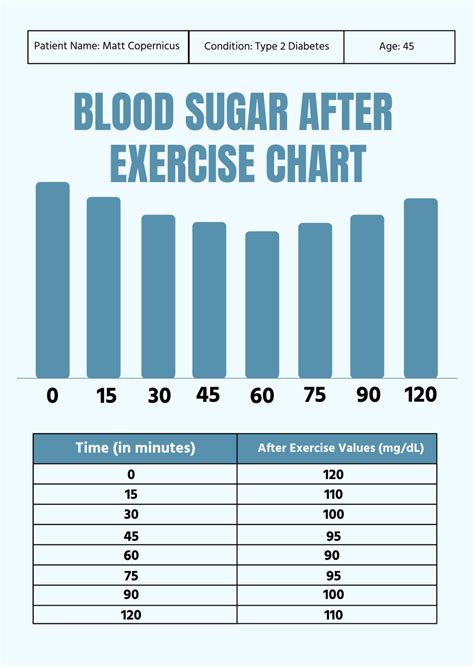Intro
Learn normal blood sugar reading levels, including fasting and post-meal targets, to manage diabetes and prediabetes, understanding glucose monitoring and optimal ranges.
Maintaining normal blood sugar reading levels is crucial for overall health and wellbeing. Blood sugar levels, also known as blood glucose levels, refer to the amount of glucose present in the blood at any given time. Glucose is a type of sugar that serves as the primary source of energy for the body's cells. When blood sugar levels are within the normal range, the body functions optimally, and the risk of developing health complications is minimized. On the other hand, abnormal blood sugar levels can lead to a range of health problems, including diabetes, heart disease, and nerve damage.
The importance of monitoring blood sugar levels cannot be overstated, particularly for individuals who are at risk of developing diabetes or those who have already been diagnosed with the condition. By keeping track of blood sugar levels, individuals can make informed decisions about their diet, exercise, and medication, which can help to prevent or manage diabetes-related complications. Moreover, maintaining normal blood sugar reading levels can also help to reduce the risk of other health problems, such as obesity, high blood pressure, and high cholesterol.
In recent years, there has been a growing awareness of the importance of maintaining normal blood sugar reading levels, and this has led to an increased focus on preventative measures, such as healthy eating, regular exercise, and stress management. By adopting a healthy lifestyle and monitoring blood sugar levels regularly, individuals can take control of their health and reduce the risk of developing diabetes and other related health problems. This article will provide an in-depth look at normal blood sugar reading levels, including the benefits of maintaining normal levels, the risks associated with abnormal levels, and practical tips for achieving and maintaining normal blood sugar reading levels.
Understanding Normal Blood Sugar Reading Levels

Normal blood sugar reading levels vary throughout the day, depending on factors such as food intake, physical activity, and sleep patterns. In general, a normal fasting blood sugar level is between 70 and 99 milligrams per deciliter (mg/dL). After eating, blood sugar levels typically rise, and a normal postprandial (after meal) blood sugar level is less than 140 mg/dL. It's essential to note that these values can vary slightly from one individual to another, and what constitutes a normal blood sugar reading level may differ depending on factors such as age, health status, and medication use.
Factors That Affect Blood Sugar Levels
Several factors can affect blood sugar levels, including diet, physical activity, stress, and certain medications. For example, consuming high-carbohydrate foods or sugary drinks can cause blood sugar levels to rise, while engaging in regular physical activity can help to lower blood sugar levels. Stress can also impact blood sugar levels, as it can cause the body to release stress hormones, such as cortisol and adrenaline, which can raise blood sugar levels. Additionally, certain medications, such as steroids and certain psychiatric medications, can affect blood sugar levels.The Benefits of Maintaining Normal Blood Sugar Reading Levels

Maintaining normal blood sugar reading levels offers numerous health benefits, including reducing the risk of diabetes-related complications, improving heart health, and enhancing cognitive function. When blood sugar levels are within the normal range, the body's cells can function optimally, and the risk of developing health problems, such as nerve damage, kidney disease, and vision loss, is minimized. Additionally, maintaining normal blood sugar levels can help to improve mood, reduce fatigue, and enhance overall wellbeing.
Practical Tips for Maintaining Normal Blood Sugar Reading Levels
Maintaining normal blood sugar reading levels requires a combination of healthy lifestyle habits, including a balanced diet, regular physical activity, stress management, and adequate sleep. Here are some practical tips for achieving and maintaining normal blood sugar levels: * Eat a balanced diet that includes plenty of fruits, vegetables, whole grains, and lean protein sources * Engage in regular physical activity, such as walking, jogging, or cycling, for at least 30 minutes per day * Practice stress-reducing techniques, such as meditation, yoga, or deep breathing exercises * Get at least 7-8 hours of sleep per night to help regulate blood sugar levels * Monitor blood sugar levels regularly and adjust diet and lifestyle habits as neededThe Risks Associated with Abnormal Blood Sugar Reading Levels

Abnormal blood sugar reading levels can lead to a range of health problems, including diabetes, heart disease, and nerve damage. When blood sugar levels are consistently high, the body's cells can become damaged, leading to complications such as kidney disease, vision loss, and foot ulcers. Additionally, abnormal blood sugar levels can increase the risk of heart disease, stroke, and high blood pressure.
Diabetes and Blood Sugar Levels
Diabetes is a chronic health condition characterized by high blood sugar levels. There are two main types of diabetes: type 1 and type 2. Type 1 diabetes is an autoimmune disease in which the body's immune system attacks and destroys the cells in the pancreas that produce insulin, a hormone that regulates blood sugar levels. Type 2 diabetes is a metabolic disorder in which the body becomes resistant to insulin, leading to high blood sugar levels. Maintaining normal blood sugar reading levels is essential for managing diabetes and preventing related complications.Monitoring Blood Sugar Levels

Monitoring blood sugar levels is an essential aspect of managing diabetes and maintaining normal blood sugar reading levels. There are several ways to monitor blood sugar levels, including:
- Fasting blood sugar tests: This test measures blood sugar levels after an overnight fast
- Postprandial blood sugar tests: This test measures blood sugar levels after eating
- Random blood sugar tests: This test measures blood sugar levels at any time of day
- Continuous glucose monitoring (CGM) systems: These systems use a small sensor to track blood sugar levels throughout the day
Interpreting Blood Sugar Results
Interpreting blood sugar results requires an understanding of normal blood sugar reading levels and the factors that can affect blood sugar levels. Here are some general guidelines for interpreting blood sugar results: * Fasting blood sugar levels: + Normal: 70-99 mg/dL + Prediabetes: 100-125 mg/dL + Diabetes: 126 mg/dL or higher * Postprandial blood sugar levels: + Normal: Less than 140 mg/dL + Prediabetes: 140-199 mg/dL + Diabetes: 200 mg/dL or higherMaintaining Normal Blood Sugar Reading Levels Through Diet

Diet plays a crucial role in maintaining normal blood sugar reading levels. A healthy diet that includes plenty of fruits, vegetables, whole grains, and lean protein sources can help to regulate blood sugar levels and prevent diabetes-related complications. Here are some dietary tips for maintaining normal blood sugar levels:
- Choose whole, unprocessed foods whenever possible
- Include a source of protein at each meal to help regulate blood sugar levels
- Select healthy fats, such as avocado, nuts, and seeds, to help lower cholesterol levels
- Limit sugary drinks and refined carbohydrates, which can cause blood sugar levels to spike
Meal Planning for Normal Blood Sugar Levels
Meal planning is an essential aspect of maintaining normal blood sugar reading levels. Here are some meal planning tips: * Plan meals in advance to ensure that you have healthy ingredients on hand * Include a variety of foods at each meal to ensure that you are getting all the necessary nutrients * Choose meals that are low in added sugars, salt, and unhealthy fats * Consider working with a registered dietitian or a certified diabetes educator to develop a personalized meal planExercise and Normal Blood Sugar Reading Levels

Regular physical activity is essential for maintaining normal blood sugar reading levels. Exercise can help to lower blood sugar levels, improve insulin sensitivity, and reduce the risk of diabetes-related complications. Here are some exercise tips for maintaining normal blood sugar levels:
- Aim for at least 30 minutes of moderate-intensity exercise per day
- Include a variety of exercises, such as cardio, strength training, and flexibility exercises, to ensure that you are getting a well-rounded workout
- Consider working with a fitness professional to develop a personalized exercise plan
Stress Management and Normal Blood Sugar Levels
Stress can have a significant impact on blood sugar levels, and managing stress is essential for maintaining normal blood sugar reading levels. Here are some stress management tips: * Practice relaxation techniques, such as deep breathing, meditation, or yoga, to help reduce stress * Get enough sleep each night to help regulate blood sugar levels * Consider seeking support from a mental health professional if you are experiencing chronic stress or anxietyWhat are normal blood sugar reading levels?
+Normal blood sugar reading levels vary throughout the day, but a normal fasting blood sugar level is between 70 and 99 mg/dL, and a normal postprandial blood sugar level is less than 140 mg/dL.
What are the benefits of maintaining normal blood sugar reading levels?
+Maintaining normal blood sugar reading levels can help to reduce the risk of diabetes-related complications, improve heart health, and enhance cognitive function.
How can I maintain normal blood sugar reading levels through diet?
+A healthy diet that includes plenty of fruits, vegetables, whole grains, and lean protein sources can help to regulate blood sugar levels and prevent diabetes-related complications.
What are the risks associated with abnormal blood sugar reading levels?
+Abnormal blood sugar reading levels can lead to a range of health problems, including diabetes, heart disease, and nerve damage.
How can I monitor my blood sugar levels?
+There are several ways to monitor blood sugar levels, including fasting blood sugar tests, postprandial blood sugar tests, random blood sugar tests, and continuous glucose monitoring (CGM) systems.
In conclusion, maintaining normal blood sugar reading levels is essential for overall health and wellbeing. By understanding the factors that affect blood sugar levels, adopting healthy lifestyle habits, and monitoring blood sugar levels regularly, individuals can reduce the risk of diabetes-related complications and improve their overall quality of life. We encourage you to share this article with others who may benefit from this information and to leave a comment below with any questions or feedback you may have.
